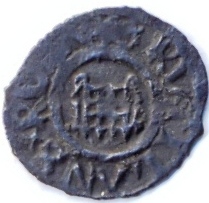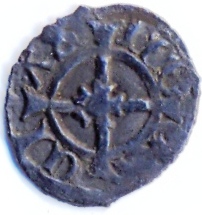£££ Top Prices Paid for Hammered Farthings £££
Click Here
Overview:
Henry VII accumulated an enormous wealth and it took Henry VIII many years to squander it. Only when his resources were nearly depleted did Henry VIII seek easy solutions to guarding English coinage against competitive foreign currencies - the debasement of his coinage. Gold was reduced to 0.83 fineness and silver eventually to 0.33 fineness. One major design change was the introduction of the portcullis/rose farthing as a means of differentiating between the farthing and the diminutive half-penny. The Hammered Silver Farthings of Henry VIII are all extremely rare - and those of the Canterbury mint excessively so.
The Canterbury mint was the ecclesiastic mint of the Archbishop of York, Thomas Cranmer.².


Date: 1526-1544
Mint: Canterbury
Type: SECOND COINAGE
Diameter: 9mm
Weight: 0.16g (2½ grains¹)
Obverse: RVTILANS ROSA around a Portcullis
Mint mark: Catherine Wheel
Legend translated:
A dazzling Rose
Reverse: DEO GRACIAS
Rose on "Long Cross"
Legend translated:
By the Grace of God
Reference(s):
S.2363A
N.1821/2
Scarcity: Extremely Rare
Guide Price:
£550 (Fine)
£1200 (Very Fine)
Note:
Provenance: Found at Canterbury, 1987. Was published in Numismatic
Circular, September 1987, p.218.
¹ SEABY, BA. (ed) 1948: Notes on English Silver Coins 1066-1648 to
help collectors in their classification (London, Seaby). pp 87
² WHITTON, CA. 1950-52: 'The Coinage of Henry VIII and Edward VI in
Henry's Name' BNJ 26, p. 56-89, 171-212, 290-332.




![Validate my RSS feed [Valid RSS]](../valid-rss.png)